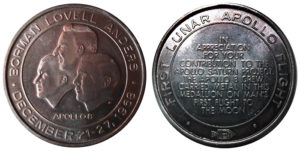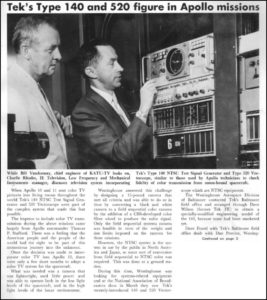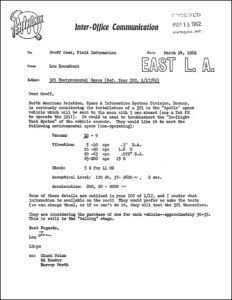Tektronix and the Apollo Moon Mission
A flurry of memos from early 1962 revealed an interest to include a Tektronix oscilloscope in the Apollo Module. North American Aviation (NAA) was considering a 321 oscilloscope inside the space vehicle to troubleshoot the “In-Flight Test Systems” of the vehicle enroute. They forecast possible sales of 30-35 units and after much discussion regarding the mechanical stress of the launch everyone realized the 321 would not meet the requirements for vibration and acceleration force at liftoff.
Internal Tektronix discussions concluded that ruggedizing the 321 would not be appropriate because of the size of the effort.
On April 10, 1962, NAA indicated that the definitely wanted an oscilloscope in the vehicle. However, only a month later NAA indicated that NASA were still uncertain about the requirements, but NAA thought they needed to use a scope outside the vehicle for repairs on the lunar surface!
Meanwhile, Bob Poulin and the Military Products Engineering Group were looking at designs for a transistorized, rugged, dual trace instrument intended for a 321-sized package that would meet other applications and could be modified to provide reliable operation under the extreme environments foreseen for the Apollo launch.
In September 1962, NAA was still trying to define the environmental requirements, and by November, specifications including a weight of 17 pounds, 28 volts DC primary power, operation at 27,000 foot altitude in 100% oxygen, and “dry” switches to prevent fire were being discussed.
In January 1963, Tek learned that NAA was starting over to define the “In-Flight Test Scope Spec” which would probably take at least six months.
That is the end of our memos and information about any Tektronix equipment to fly in the lunar module. However, Tektronix products were abundantly used by all of the various contractors and subcontractors involved in the Apollo missions. Click on the image to view the documents PDF.
The museum has a 321A on display.
Hank Crombie wrote a related customer story about his use of a S-3130 Semiconductor Test System at the Instrumentation Lab at MIT and the presentation of a an Apollo 8 aluminum medallion which contained metal from the spacecraft.

This July 25, 1969 Tekweek featured and article on Television Products used in the Apollo Mission. Click on the image to view the PDF.


